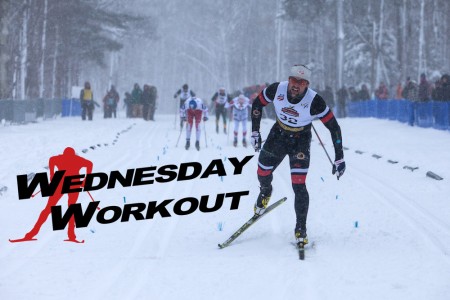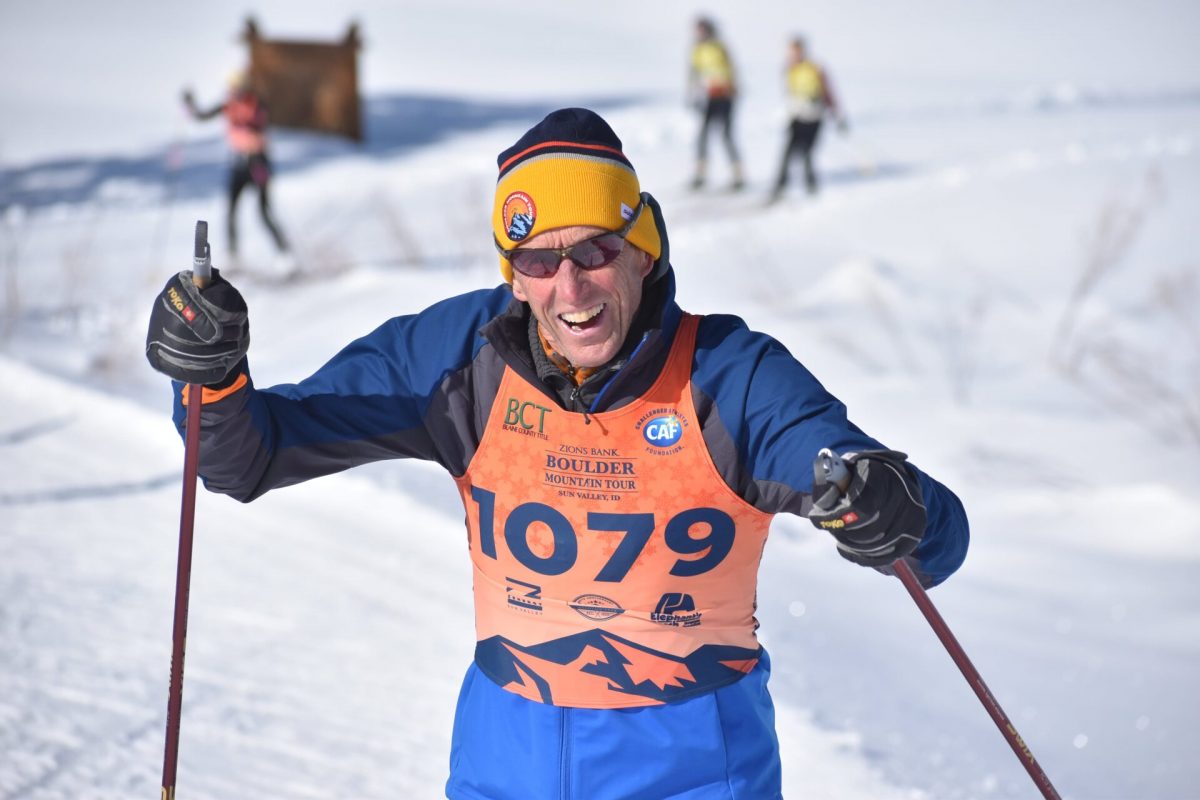
For this week’s workout, we caught up with the Bend Endurance Academy’s Dakota Blackhorse-von Jess, who won back-to-back sprint titles last week at U.S. nationals in Houghton, Mich. As he told FasterSkier after his skate-sprint win last Saturday, that was exactly his goal — to put himself in contention for a call up to the U.S. World Championships team and at the very least, earn World Cup starts later in the season as the SuperTour sprint leader.
“This year everything has been geared toward Word Championships so this is a stepping-stone,” he said after his initial classic-sprint victory on Jan. 6. “The goal was to put myself in a position to win and see if I can do it. Everything worked out really well and I’m excited. Obviously I can’t control if I go to World Championships, but I know that the way we set up the training, we are on the upswing and things will continue to rise in February.”
As of Tuesday, Blackhorse-von Jess, 29, was home in Bend, Ore., where he explained the weather was “awful. We need snow!! And to kick this fog … but it will come around. It’s never nasty here for long!”
In an email, he wrote that this period leading up to the next set of races, the Craftsbury SuperTours Jan. 30-Feb. 1 and Feb. 6-8, is his last chance to log a good training block before leaving for Europe.
“Obviously there are a few different scenarios in play but the gist of the training plan is to make sure that I have my feet under me and then start ramping up the intensity and use the sprints in Craftsbury as a tune-up for Europe,” he wrote.
And while it wasn’t exactly ideal not to have access to good snow, the Bend Endurance Academy (BEA) has been getting a few workouts done on rollerskis.
“The benefits of being at 3500 feet instead of 6000 feet and of a consistent high impact scenario on the roads (as opposed to the potentially soft and low impact scenario of snow) mean that we just aren’t that negatively affected by the lack of snow for intensity training,” Blackhorse-von Jess explained. “There’s plenty of snow up in the high country and plenty of terrain to get good distance training in, so that’s not a worry.
“We are sticking to our tried-and-true training model of continuing to build upon specific capacities and edging ever closer to my absolute values: aerobic, anaerobic, and maximal speed,” he added. “I have yet to do any true speed work this season, so that will play a more prominent role in our training these next four weeks. This is our fifth year in a long term training progression and every year we get a little further with the plan and we are really excited to see what I can bring to the table in Europe this spring!
“I have yet to do any true speed work this season, so that will play a more prominent role in our training these next four weeks.” — Dakota Blackhorse-von Jess (Bend Endurance Academy), who won both sprints at 2015 U.S. Cross Country Championships
The workout: Qualifier prep with the 15-15
“Of the many, many facets of training one of the most critical is understanding race pace. People throw around the word ‘race pace’ an awful lot, but I see very little overlap between a true race simulation and other intensity workouts.
While technique, conditions, race distance, mass start vs. individual start, and terrain all play a role in determining what race pace means, using measured training can be one of the most effective tools for internalizing that meaning. Personally I have an incredibly hard time replicating a race effort. There is just a lightness and intensity that possesses me when I step up to the line. Even when I’m not ‘feeling great’, my body just knows what to do — for the first ten strides or so. Then what? That’s where pace training comes in.
As a sprinter, the 15-15 is how I practice qualification. In my personal notation, the colon denotes the break between intensity and rest while the dash shows a change inside the intensity. For example, 3x6x60:30 would be 3 sets of 6 repeats of 1 minute on, 30 seconds off, consistent intensity.
In this case, the workout goes 10×15-15 or 10 repeats of 15-15 (I like 4.5 minutes of rest, but rest can be a pretty individual thing). The purpose of the workout is to simulate qualification pace without the taxation of a full-duration simulation.
Here’s how it goes:
- 45 seconds to go, get into line behind the starting cone. Whether you do this alone or with teammates, I think it’s important to simulate the minute BEFORE starting qualification. This can be a critical time and it’s an opportunity to try different mental strategies. You never know when you’re going to stumble across a technique that really syncs with you. Hear the clock in your head and see the skiers ahead of you starting. Step up to the line, see the wand, move your skis, set your poles, whatever your thing is – do it. See the clock, hear the beeps, and go. This is a great opportunity to practice different styles of starting. If you can use the clock to get into a routine that becomes automatic, you’ve already made yourself a better racer. When I do this workout, I like to have my coach time the first interval and yell at me at 15 seconds and 30 seconds, then set out cones so a.) no one has to be keeping an eye on the watch and b.) it’s immediately obvious when you start to slow down — or speed up.
- I try to make the first 15 seconds of the interval exactly the way I’d want the first 15 seconds of qualification to go: quick smooth start, build speed, find rhythm, relax and flow. The second 15 seconds is a maximal effort; a simulation of the final stretch of a qualification. Don’t forget to ski THROUGH the final cone. That 10th of a second could make all the difference. Each repetition should be a test of your muscles and your neurons but not an aerobic test or a lactate loading workout. For me, it’s the management of the workout that is the best indicator of actual ‘race pace’. If each subsequent intervals is slower and slower, I started too fast. If there is no change in pace between the first and second half of the interval, I either started too fast or I have no top-end. Once I’ve started to find repeatable paces this workout really becomes effective because I can play with the paces — the “feeling”, if you will. Can I use more pace in the opening 15 seconds? Can I find MORE speed, whether through relaxation or technique focus under fatigue in the final 15 seconds? Are there mental queues or mantras that make a difference?
In the past I’ve done this workout three or four times in my race prep, but this year I’ve only done it once during the lead up for Nationals. It’s a great way to remind myself what racing should feel like — both how “easy” and how ‘hard’ it can be — in the same race. We might not do this workout again this year, but even just the one session helps me feel like I’m in full race rode.”




3 comments
freeheel
January 15, 2015 at 10:20 am
uhhh, that was confusing. Please try again, something along the line of 15 intervals of 30 sec with 1 minute rest between intervals. Ski easy for 5 minutes and repeat for a total of 30 intervals of 30 sec…………..Thanks
ski23
January 15, 2015 at 12:01 pm
I’ve completed this workout with Dakota (or chasing him). More simply put its 15s @ 85-90% into 15s @ 100% = 30 seconds. Then rest for 4-5min. Repeat.
freeheel
January 15, 2015 at 4:45 pm
Got it, thank you! I love mixing it up and going skiing with a purpose, always learn something along the way-thank you.